It is not just infrastructure firms that must know the inside track on electrification; train manufacturers need to know what is happening, too.
The current situation is tricky. There is widespread belief that the only market is in overhead line electrification (OLE), which surely means that there is only demand for electric multiple units (EMUs). But in February, the Rail Safety Standards Board (RSSB) Director of Innovation David Clark made the following point: “Only 60% of the network makes a business case for electrification. That means 40% needs an alternative.
“Sixty six per cent of DMUs are more than 20 years old. They need to be replaced or we need to think of something different.”
The situation gets more complicated: Network Rail is at something of a crossroads, and this interferes with OLE projects and, consequently, orders for trains.
Costs are being assessed, and a comprehensive spending review is to be carried out this summer. Nobody really knows what the results will be. And there is always the possibility that schemes could be scaled back, delayed or even axed.
Speaking at Railtex on May 13, Bombardier Head of Sales Rolling Stock UK Chris Parker said: “It is pleasing as a manufacturer to see the emphasis that the Department for Transport (DfT) has placed recently on new rolling stock, rather than cascades. The UK is an opportunity. We still monitor emerging technology, such as Independently Powered Electric Multiple Units (IPEMUs) but most new rolling stock is EMU. There are no plans for diesel multiple units, but you never know.” If there is a market, he reckons it would be for between 100 and 200 vehicles. But he compares that to the need for, potentially, thousands of new EMU vehicles.
To back this up, he highlights studies from the Long Term Passenger Rolling Stock Strategy for the Rail Industry, which talks of the need for thousands of new vehicles, nearly all of which would be electric.
Alstom Managing Director Urban & Services, Alstom Transport UK Piers Wood shares this opinion. Also speaking on May 13, he said: “We need to get back into the rolling stock market. It is like a clean slate for us. We have overcome past problems and we are now a very capable and reliable performer.
“The next thing is to win something, and the problem is that there is almost too much.” However, he warns, the Comprehensive Spending Review needs to be carefully monitored.
New manufacturers are preparing to enter the market. Hitachi started in 2007, when the first Class 395 Javelins arrived in the UK, and the firm has since won deals to supply AT200 EMUs to ScotRail, as well as the high-profile Intercity Express Programme (IEP) trains. That is set to be followed by the AT300 order for at least 29 trains for First Great Western (FGW), which will also be bi-mode trains. This means that OLE can be extended westwards, and trains capable of using it would already be in place.
But other manufacturers also have designs on the UK. Polish manufacturer Pesa (Pojazdy Szynowe Pesa Bydgoszcz) attended the Railtex exhibition on May 12-14 to showcase its products.
At the same event, Siemens launched its Desiro Verve, which is capable of speeds up to 125mph, and is very much aimed at the pending electrification of the Midland Main Line and trans-Pennine routes, as well as stock replacement orders for, perhaps, Abellio Greater Anglia and other deals in Scotland.
Then there is Construcciones y Auxiliar de Ferrocarriles (CAF), which is currently working with Serco to supply Mk 5 carriages for the Caledonian Sleeper franchise. It has developed trains it believes would be of interest to UK operators.
Construcciones y Auxiliar de Ferrocarriles (CAF) Business Development Director Richard Garner said on April 28: “We constantly hear people talk about the long-term pipeline of work, and we see it a little different.
“The franchising process throws up all these questions every time. ‘Should we refurbish?’ ‘Can we re-traction?’ ‘As a movement of rolling stock from one franchise to the other, it’s about growing business, increased revenues, passenger numbers, do I need a new rolling stock for that?
“So every single time you get to this, and that’s pretty much the train operating company standard of 20 questions to ask somebody, and we need to respond to that market, the dynamics of that market.
“I think over the next ten years there’s every reason why suppliers will continue to operate in the UK. And again some of this takes you back to the franchising process, it creates different opportunities. There’ll be phases. And that’s because you can see that there’s a requirement for a large number of vehicles in a few years. So the UK market’s going to be quite a fruitful place.”
The Long Term Passenger Rolling Stock Strategy for the Rail Industry is compiled by the Rolling Stock Strategy Steering Group. It includes analysis of future rolling stock needs by the original three rolling stock leasing companies (Angel Trains, Eversholt Rail Group and Porterbrook Leasing) and the Rail Delivery Group, which represent passenger and freight train operators and Network Rail. Latest figures exclude the very large numbers of new trains which will be built for London Underground in the coming years, the smaller quantities for international high speed services to and from London, and for light rail routes. But the most recent report, published in March, is consistent with the Government’s recent announcement about rolling stock requirements for the North of England.
The report includes projections for the quantities of new rolling stock that will be needed in the next five years that have been revised upwards because of the growth in passenger numbers.
These projections also reflect recent announcements regarding new trains, some of which have been announced, and some for which deals have not been concluded. These include:
- c2c (no confirmed deal).
- Thameslink (1,140 vehicles being built by Siemens for which the first arrives in August).
- ScotRail (for which 234 vehicles are being built by Hitachi for delivery from 2017).
- Caledonian Sleeper (75 carriages to be delivered from 2017).
- South West Trains (150 Class 707 vehicles built by Siemens, for which construction begins in June).
- Transport for London for the London overground (including 39 trains for the West Anglia Inners, for which no deals have been confirmed).
The strategy highlights the many customer benefits of electrification, including increased fleet reliability, improved train punctuality, better acceleration to shorten journey times, greater train capacity and reduced noise, vibration and emissions. It takes into account Government commitments, in principle, to continue to electrify the rail network (a commitment, it must be said, that was made before the May 7 General Election).
Taking into account the Government’s commitment in principle to continue the electrification of the network, the strategy forecasts the following:
- Based on forecasts of future passenger demand, an increase in the size of the fleet of between 52% and 99% will be required over the next 30 years.
- The proportion of vehicles using electric traction will rise from 69% today to 92-95% in 30 years’ time
- Between 13,000 and 19,000 new electric vehicles will be required over the period, with an average of between eight and 12 needing to be delivered every week. This is in contrast to four per week in the five years to April 2014. Around 3,350 new electric vehicles will be needed by April 2019, with orders already placed for 90% of this total. A further 428 vehicles for Crossrail, the Intercity Express Programme (IEP) and Essex Thameside have already been committed for delivery after this date.
This requirement for new electric vehicles is front-loaded. Updated analysis of fleet sizes in Control Period 5 (CP5) and CP6 indicates that 1,109 new EMU vehicles are now committed for delivery in CP5 (for England, Wales and Scotland and including TfL’s rail concessions), in addition to 2,240 vehicles for the Thameslink, Crossrail and IEP projects.
This makes a total of 3,349 new vehicles to be delivered in CP5. Orders have already been placed for 3,019, or 90% of these. This is compared with the total of 1,055 new vehicles delivered in CP4. The CP5 total could rise further as new franchises are let.
Richard Brown, chairman of the Rolling Stock Strategy Steering Group, said: “Demand for rail travel is set to continue to grow. Meeting this demand with the most suitable and cost-efficient rolling stock is vital to maximising the railway’s benefits for passengers, as well as the economy, local communities and the environment. This updated rolling stock strategy sets out future potential demand and identifies challenges and opportunities.
“The rail industry is committed to working with Government to ensure that a whole-life, whole-system approach to rolling stock is adopted. This will maximise both value for money and benefits for rail customers.”
It states that rolling stock procurement should, in most cases, be market-based and franchise-led. “By putting train operators and fleet owners at the centre of planning and delivering rolling stock, better value for money can be achieved, as will be the case for the new and additional rolling stock to be procured for the North of England.”
Wood, speaking about the need for testing of new trains, says that things are beginning to change regarding performance, but notices that there are certain trends regarding deliveries: “The UK has always been given a ridiculous lead time to deliver trains. Where there is a long lead time it tends to be where DfT has led the project. The commuter market tends to be much tighter.”
Bombardier’s Parker says: “As a supplier, the trickiest thing is the different emerging strategies for every operator. We believe it is a bigger concern for the financiers. It’s not necessarily tricky to deal with. In the early days of a bid you can get diverging strategies emerging and we can offer three versions of the same platform for three different operators. We then need to keep track.”
NR Principal Engineer James Ambrose said of the IPEMU back in February: “There’s a desire for more electrification, but it is not viable to electrify the entire railway - is there another answer?” He elaborates on this point: “Low bridges, etc, are very expensive to wire due to the infrastructure. Trains may be able to coast, but a train could ‘sit down’ . Long distance Independent Power could help, but the big win could be the ability to traverse ‘gaps’, such as travelling from east to west across a line that is not electrified.” Parker says of the possibility of IPEMU: “Let’s say electrification will always have gaps. These will be small pockets and there will be pockets that will always need DMUs. But if the pocket is perhaps 10% or more of the route then use IPEMU.”
Ambrose believes that there are plenty of benefits to the project. “There is reduced rolling stock costs, reduced electrification costs and it’ll be far better than relying on fossil fuel for power.”
Network Rail is due to issue a strategy document, which has been delayed since late March, regarding electrification. At the February 9 event to launch the IPEMU it was made clear that IPEMU would feature in that. Ambrose says: “It will consider the conversion of DC to AC power - and also IP fleets.”
Per Allmer, Head of Western Europe, Middle East and the Africa region at Bombardier Transportation says: “The IPEMU demonstrates what battery technology can offer the rail industry. Following extensive design and testing work, the train has now successfully begun a trial passenger service, to prove the viability of the concept. It’s a technology we can incorporate onto future new-build trains, such as our Aventra platform, and retro-fit into existing modern rail vehicles, adding value to existing fleets.”
Additionally, the strategy includes updated fleet size forecasts to show the ‘Electric and Bi-mode’ fleet totals increasing by between 1,900 and 2,500 over the course of CP6 in the three scenarios. This compares with an increase of between 2,500 and 3,100 over the course of CP5, it claims.
It is not possible, it states, to predict how many older electric vehicles and electrically-hauled vehicles will be permanently retired during these control periods, and also how many EMUs, which may temporarily be off-lease at the end of 2019, may move back into operational use during CP6.
Nevertheless, it appears highly likely on the basis of the assumptions contained in this analysis that the total number of new vehicles required to be delivered in CP6 will be lower than in CP5.
The rolling stock strategy states: “The total net increase in fleet size is forecast to be lower in Control Period 6 (2019-2024) than in CP5 (2014-2019), following completion of the very large orders for the Thameslink, Crossrail and IEP projects. Britain’s rail industry and its suppliers have several times experienced large fluctuations of demand for new vehicles and other equipment, and it is important that this is avoided so far as possible in future if the confidence of investors and the supply chain is to be increased.
“This would be helped by early Government commitment to a specific programme of electrification for CP6.” Next year, the Office of Rail and Road (ORR) will issue its draft conclusions for the next control period. It wants innovation, but stresses that the industry must lead that, not the regulator. ORR Chairman Anna Walker said on May 12: “We need to recognise electrification is massive. We have not done this for a long time. We are actively working with Network Rail to learn. We need to turn the problems into positives. We need to define the costs, the planning and the delivery.
“I can say there is an enormous will to work together. Things are not how we want them to be, but we need to plan ahead for more than the current control period, or the next one. You have to look five, ten, 15, 20 years ahead. I have confidence we can do that.”
Back to the strategy, which claims: “Electrification will, in many cases, permit longer trains, and will enable diesel trains to be transferred to non-electrified routes, where growth has been constrained by a lack of sufficient vehicles.
“The modelling of electrification and growth demonstrates a reduction in rolling stock unit costs of more than 30% in all scenarios. The strategy emphasises the resulting benefits to passengers, including improvements to punctuality and reliability.”
Walker spoke more than two months after the strategy was published. The strategy states that the present total national Network Rail track mileage is 19,336 single track miles (excluding depots and sidings). Of this, 8,008 track miles (41.4%) are electrified and 11,312 track miles (58.6%) are non-electrified. It states that 64 track miles of new electrification were completed in 2013/2014, in the North West of England and in Scotland.
It adds that in the whole of CP4 (2009-2014) new electrification was added to 204 track miles. Following the completion of around 1,850 track miles of electrification currently authorised, more than half of the national track miles (51%) will be electrified.
Although the Department for Transport cannot yet commit to a rolling programme of electrification beyond CP5, the direction of Government policy is to continue such a programme into CP6 and beyond. Views were sought by the DfT on this in response to the 2012 High Level Output Specification (HLOS).
Transport Scotland’s CP5 HLOS already contains a specific objective of a rolling programme of electrification amounting to approximately 60 single track miles per annum, following the completion of the Edinburgh-Glasgow Improvement Programme (EGIP) electrification.
In an age of austerity, value for money is key. The strategy states: “Rolling stock-related costs per vehicle mile can be reduced in real terms as a result of these changes because the costs of leasing, maintenance and energy for new electric vehicles are substantially lower than the costs for comparable new diesel vehicles; also the costs of older electric vehicles are significantly less than for comparable older diesel vehicles.
“The presently committed programme of electrification will take the proportion of track mileage that is electrified from 41% to 51%. The Low, Medium and High scenarios in this rolling stock strategy (RSS), based on some initial ranking, illustrate the potential to increase this figure to 62%, 71% or 77% in subsequent years.”
But there is also a warning: “Future energy costs and the relative costs of diesel fuel and electricity are very difficult to forecast. Electricity costs are currently rising to help pay for lower carbon sources, while diesel fuel costs have fallen sharply.
“This factor, if it continued in the medium to long term, would have some impact on the business case for some electrification projects, but would not undermine the key conclusions of this RSS.”
It also points out: “Investor and supply chain confidence would be enhanced, and costs potentially reduced if funders could make early commitments to a future electrification programme beyond CP5. Ministerial and departmental commitment to a specific and significant programme of electrification in CP6 would greatly help Network Rail and the suppliers of electrification.”
It seems the industry agrees OLE is the future. Funding and planning look set to be the key issues. And much more debate on the subject is inevitable.
- This feature was published in RAIL 775 on May 27 2015

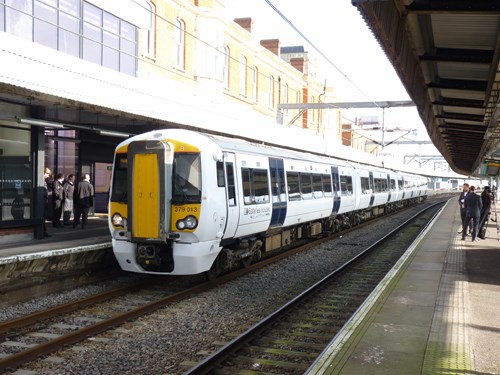
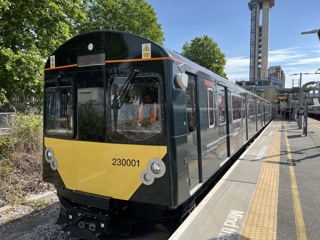
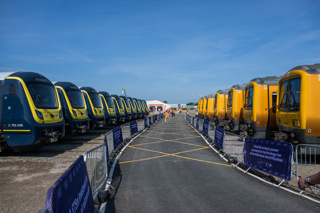
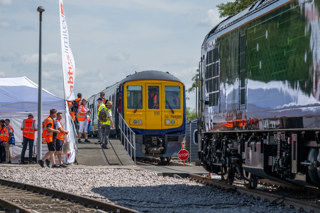
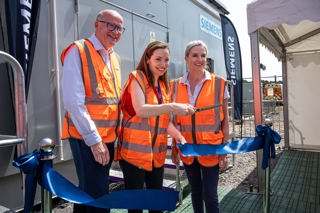
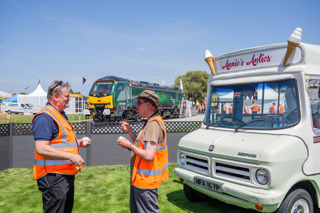






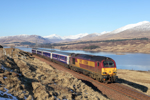
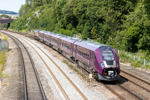



Login to comment
Comments
No comments have been made yet.